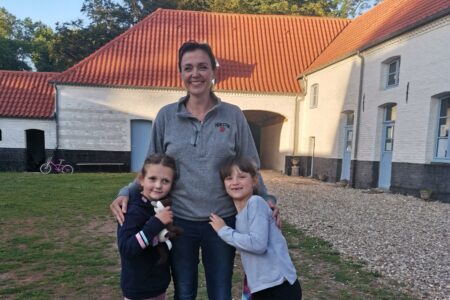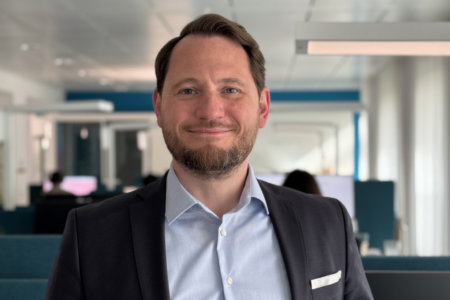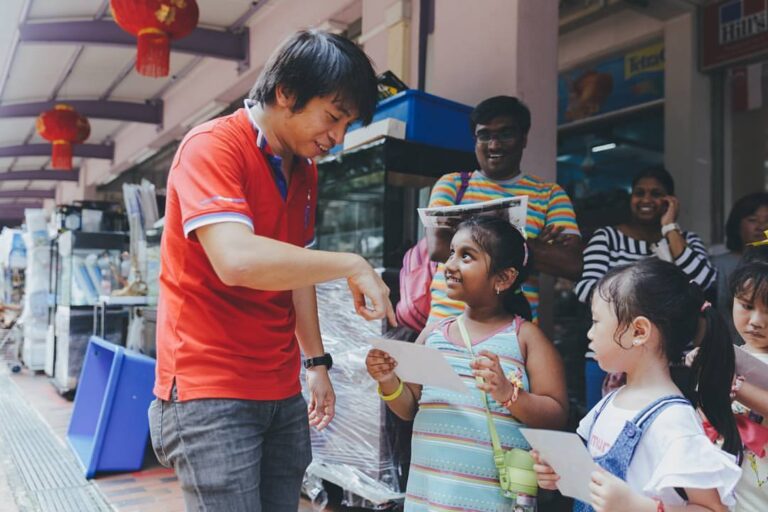
A powerful quote by British artist and designer Yinka Ilori goes like this: “As designers, we have such power to make design change the world. We really need to make better use of our platform and do stuff that is useful.”
It’s a quote that registered architect Bingyu Cai understands immensely.
“When we talk about architecture, people think about buildings, but it’s actually so much more,” says Cai. “It can be about place-making – how do you make a place? How do you help cities to thrive?”

Cai (left) never expected to go beyond his Diploma in Architectural Technology, but hard work paid off when he ended up obtaining his bachelor’s and master’s in Australia. Source: Bingyu Cai
It’s never just another building
Born and raised in Singapore, Cai’s interest in architecture began not with the city-state’s impressive range of buildings, but with a board game he played as a child called Hotel. This Monopoly-esque game has players try to buy and build the best hotels in the world and compete for guests.
Back then, when Cai’s parents didn’t purchase the game for him, he made the entire game with cardboard and drew out how the hotels would look.
“It wasn’t about the building, but more of putting things together,” he says.
When it came time to plan next steps after high school, Cai chose a Diploma in Architectural Technology from Singapore Polytechnic. A BSc in Architecture from Australia’s University of Newcastle and an MArch at the University of Tasmania followed.
Cai never thought he would go further than the diploma.
“But when I was serving the mandatory military service in Singapore and experienced what it was like there, I told myself I had to study hard,” he says.
And study hard, Cai did.
In 2008, he earned his master’s degree — the same time the global financial crisis hit.
His bright future didn’t look as bright anymore.
“It was either staying in Australia and working at McDonald’s, or returning to Singapore,” says Cai.
Though many friends stayed on in Australia working odd jobs, Cai headed home to get a job, get licensed, and get ready to open his own firm.
In the first two years of his career, Cai worked on many shoebox apartments.
In land-scarce Singapore, where 78.7% of resident households live in subsidised, high-rise public housing apartments, shoebox apartments became a solution.
These compact units of 500 square metres or less housed individuals and even entire families.
It also became something that developers abused until the government took action to resolve the issues. This involved cutting the maximum number of units allowed in new private flats and condominium developments in a bid to manage potential strains and stresses on infrastructure.
But in that period, it was demoralising work for Cai.
“I told myself that I did not study so much to do work like this, and so my search for meaning, for finding purpose, led me to Ground-Up Initiative (GUI),” says Cai.
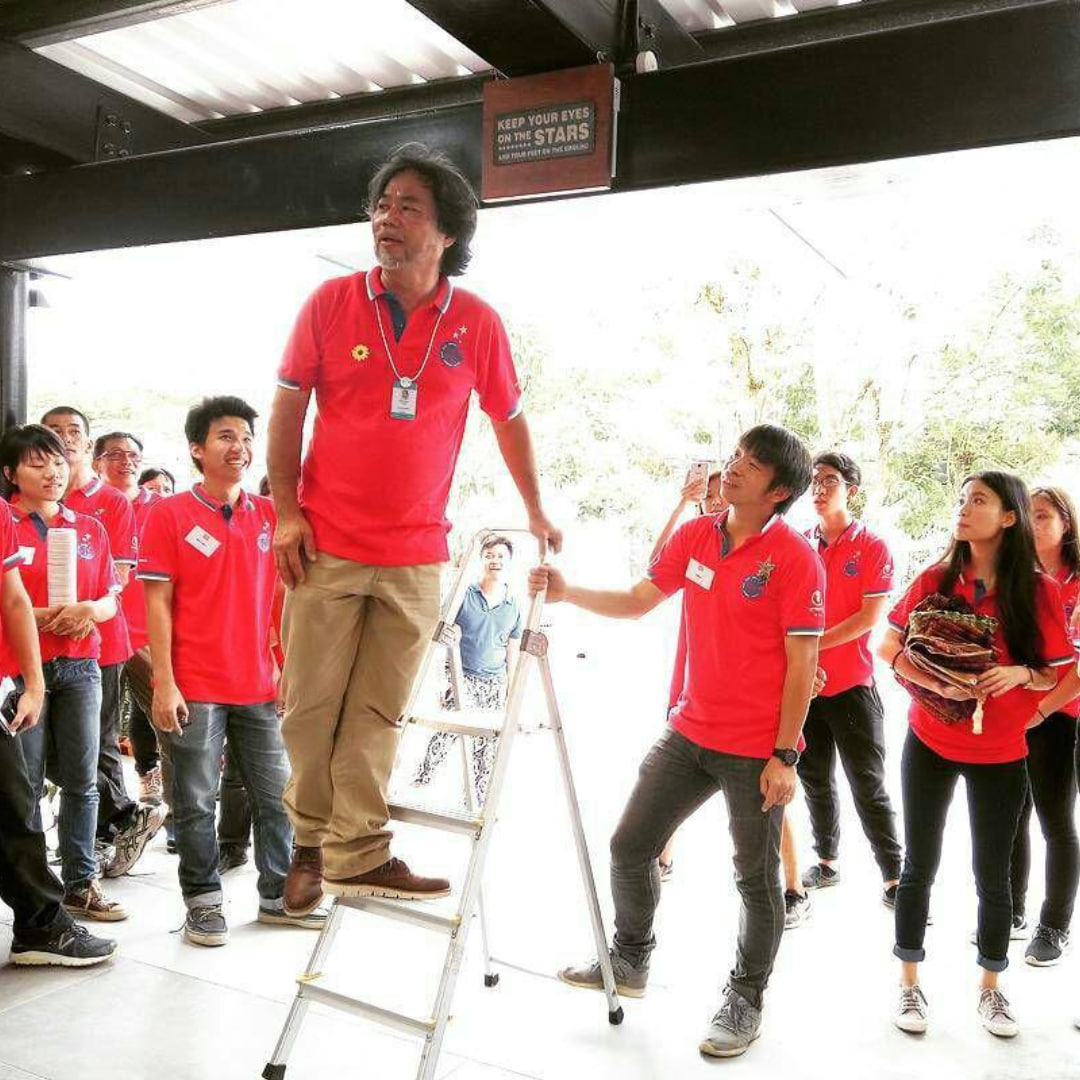
After speaking with Ground-Up Initiative founder, the late Tay Lai Hock (pictured on the ladder), Cai (to the right of Tay) was inspired to join the non-profit. Source: Bingyu Cai / Ground-Up Initiative
Finding purpose in the most unexpected places
In 2011, whilst feeling lost, Cai began volunteering with GUI, a non-profit society with a mission to connect people with nature, the self, and others through cultivating holistic solutions for a happier and more sustainable future.
Here, there were many ways for Cai to get his hands dirty and connect with nature. Workshops are available for everyone, including corporate and educational programmes that allow everyone to share in the fun.
Seeing these prospects — and what GUI had achieved — struck Cai.
He was so inspired by the possibility of this new, more purposeful start that he left his job to work at GUI full-time.
Things, however, took a turn in 2018 when GUI founder Tay Lai Hock passed away unexpectedly. As other members of GUI stepped forward to take up key leadership roles to keep the organisation running, someone else had to fill in for the role of President, and that person turned out to be Cai.
“I’m the idiot who became the president,” laughs Cai. “Why I say idiot is because when our late founder passed, GUI was 600,000 Singaporean dollars (approximately US$460,925) in debt.”
Building GUI from the ground up had been – and still is – a Herculean task, especially when your country is so short of land that even public housing apartments can cost more than US$1 million.
What began as a space taking up less than 100 square metres of land in 2008 to occupying 26,000 square metres of land, running over 700 programmes, and engaging over 150,000 volunteers and participants over the years took a lot of hard work and financial investment.
“Our founder had borrowed money to build up the space, so when he passed away, a group of us at GUI sat down and decided that because the money was used to build the space, we would take on the debt, and I signed to become the president,” says Cai.
And so began a Sisyphean-like task of keeping a sinking ship afloat. While Cai reveals that GUI is on track to clear the debts, other challenges persist in GUI’s history and future.
“Back then, when the government came, they likely saw us as a hippy community doing hippy work, though they were still supportive of it,” says Cai. “But the team at GUI agrees that the narrative has to change – how do we make GUI accepted not just by the people but the authorities too? And how do we make it relevant for society, for the city?”
“Depending on who you are, I would say that GUI aims to bring people together, to connect and heal. But to donors and corporates who want to support us, our pitch is that we are an urban solution for rapid urbanisation.”
View this post on Instagram
It’s a solution for cities everywhere, especially those like Singapore, which have undergone massive technological and urban development across the last few decades.
In 2023, Singapore’s Minister for National Development Desmond Lee told an international audience that making decisions on the country’s land use and infrastructure is a balancing act between the needs of today’s generation and future generations.
“We’re a city-state, which means there is no Plan B, there’s no alternative city,” said Lee. “The city is the country and (whether) the city succeeds or fails, that determines the fate of the nation.”
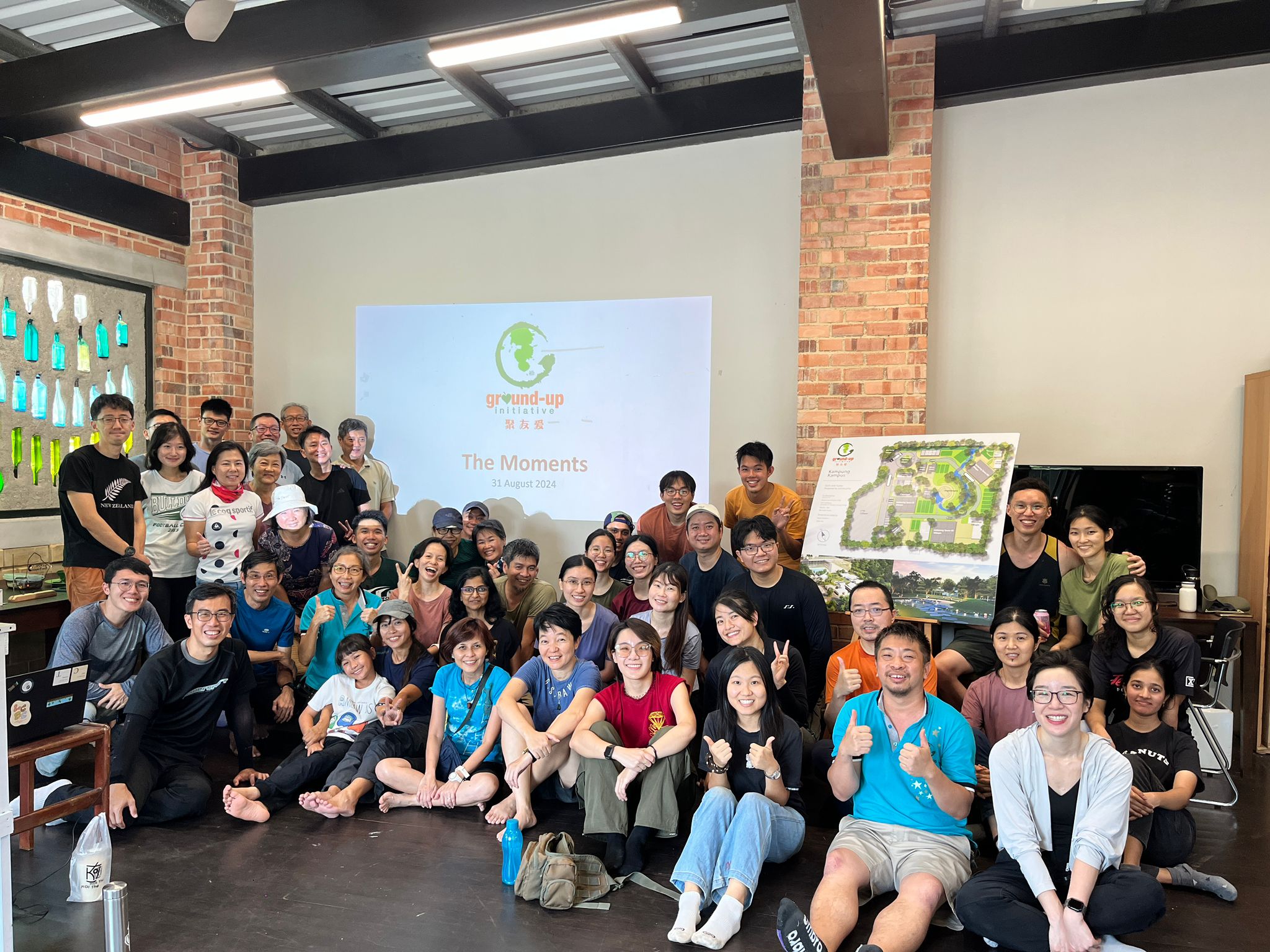
Cai credits the time, hard work, and effort the team at Ground-Up Initiative has put in over the years to keep the organisation running smoothly. Source: Bingyu Cai / Ground-Up Initiative
Paving the path for a better Singapore
In March 2024, Singapore was revealed as the world’s latest “blue zone,” a place where people lived longer and healthier lives.
Originally, blue zones came about by natural circumstances, like those in Okinawa, Japan, who had strong community support and a purpose in life, or those in Sardinia, Italy, who had healthy eating habits.
Singapore, however, is a blue zone by policy – multiple policies, in fact, such as the Proximity Housing Grant, which financially incentivizes people to live with or near their parents and children, and the various policies promoting healthy eating.
It’s something that GUI is taking advantage of too.
“I learned from the co-founder of FOLO Farm in Malaysia that human beings need four things to thrive – a healthy body and mind, purpose in life, being part of a community, and a connection to nature,” says Cai. “These four things are tied into what we do at GUI, and architecture, as something that helps with place-making, helps with that.”
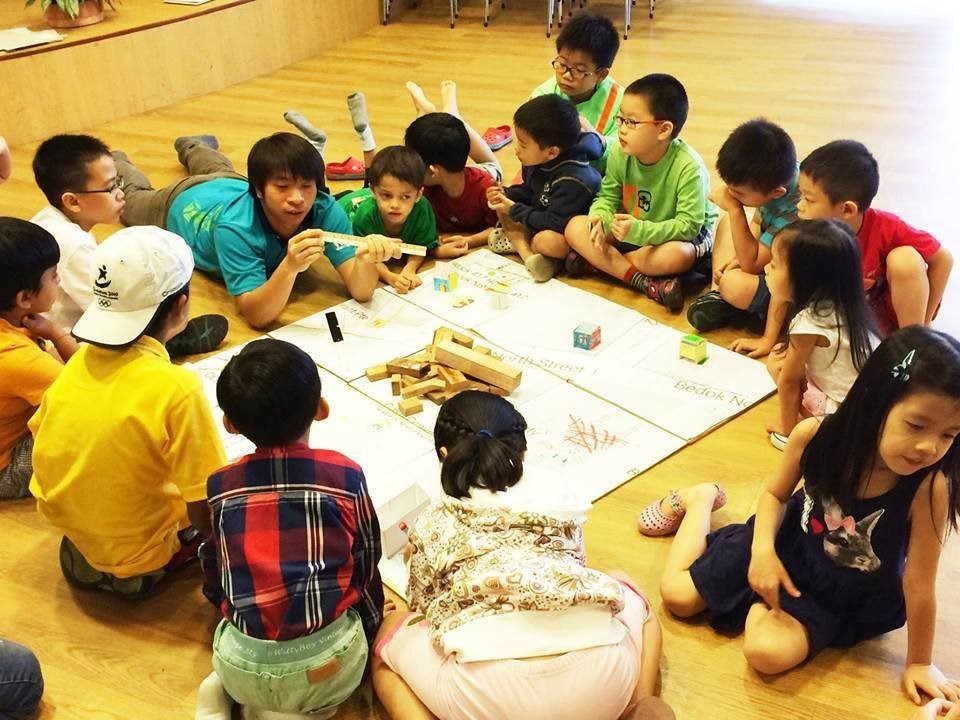
Ground-Up Initiative aspires to build a 21st-century “kampung culture” that cultivates holistic solutions for a happier and more sustainable future. Source: Bingyu Cai / Ground-Up Initiative
Now, as GUI prepares for its future, Cai and the team behind GUI hope to stabilise the organisation as much as possible. But beyond that, Cai hopes to achieve other dreams moving forward.
First on his list is a “Rubbish Museum.”
“It’ll be a museum that’s alive – you don’t go there to see that the world is collapsing, but rather you go there and be part of the solution,” he says. “You help to upcycle waste, turn it into compost or build material, and use it to build the museum itself.”
Next on his list is something to help make a positive impact too.
In Singapore, the most esteemed scholarship is the Lee Kuan Yew Scholarship. It is synonymous with prestige and a willingness to serve Singapore and marks Singapore’s continuous effort to recognise outstanding individuals with the aptitude and inclination to contribute to society.
“I want to dive deeper into research to understand why places like GUI are so effective in addressing the challenges of rapid urbanisation,” says Cai. “GUI’s success in building strong, connected communities makes it a valuable urban solution, and I aim to explore what specifically contributes to that success.”
“What is it about GUI’s space and approach that helps create resilient cities? There’s so much to learn from similar urban interventions worldwide, and my goal is to bring together those insights to share with others, so we can better understand how to foster sustainable, community-driven solutions in urban environments.”
“At least, if I can get the scholarship, my parents won’t feel like their son isn’t doing much,” laughs Cai.








